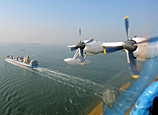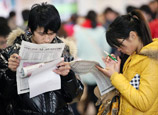
China and Russia signed a series of documents, including the "Sino-Soviet Intergovernmental Agreement on Economic and Technological Cooperation" and the "Sino-Soviet Intergovernmental Economic and Technological Cooperation on Industrial Construction and Modification Projects in China". They laid the foundation for the rapid re-establishment and development of bilateral cooperation between the two countries.
1991-1992:
Following the breakup of Soviet Union, the two countries signed the "Sino-Russian Intergovernmental Agreement on Economic and Trade Relations". It confirmed the two countries would give each other most-favored-nation treatment, which would guarantee the stable transition of economic and trade relations between them.
1996:
China and Russia jointly established a mechanism for regular meetings between the prime ministers of the two countries. In the same year, the two countries set up a committee for Chinese and Russian deputy premiers regularly meeting. It has 10 sub-committees in charge of economics and trade, energy, transport, nuclear energy, science and technology, aerospace, finance, information, civil aviation and environmental protection.
Bilateral trade volume stayed between $5 billion and $8 billion from 1991 to 2001. Barter trade was the major mode from 1991 to 1995 before the two governments agreed on trade settlements using convertible currency.
Since 2001:
China-Russia trade picked up fast growth and trade volume surged from $10.67 billion in 2001 to $56.83 billion in 2008. The global financial crisis in 2008 drove down the China-Russia trade volume to $38.8 billion in 2009. But bilateral trade regained growth momentum in 2010 with a volume of $55.45 billion and China became Russia's largest trade partner while Russia was the 13th largest trade partner of China.
Trade volume jumped 42.7 percent year-on-year to $79.25 billion in 2011 when top leaders of the two countries agreed to increase it to $100 billion before 2015 and $200 billion before 2020 during the 10th anniversary of the Treaty of Good-Neighborliness and Friendly Cooperation Between China and Russia held in Moscow on June 17.
Energy cooperation was a highlight between the world's leading energy supplier and consumer. An oil pipeline linking Daqing in Northeast China's Heilongjiang province and the Russian city of Skovorodino officially began production on Jan 1, 2011, and is expected to transport 15 million tons of crude oil from the Russian city to Daqing every year. The first two sets of the Tianwan Nuclear Power Plant in East China's Jiangsu province were put into operation in 2007. The nuclear power generating units are from Russia and Russian engineers are also supplying technological assistance to the project.
Russia's accession to the WTO in 2012 will reduce its tariffs and is expected to advance bilateral trade to a higher level.
















 Farmers in E China's Fujian prepare for spring sowing
Farmers in E China's Fujian prepare for spring sowing


![]()
